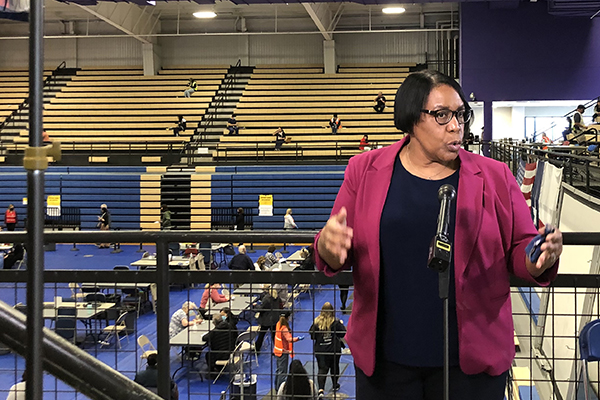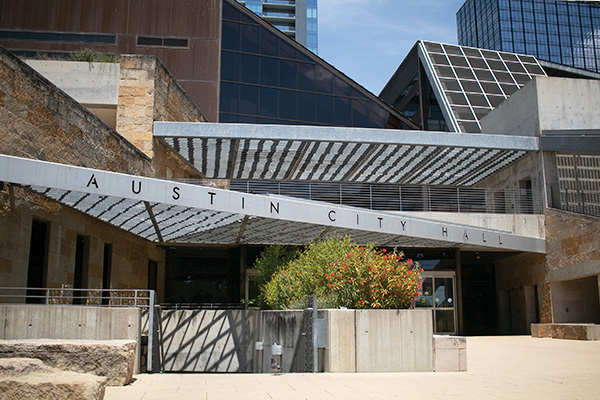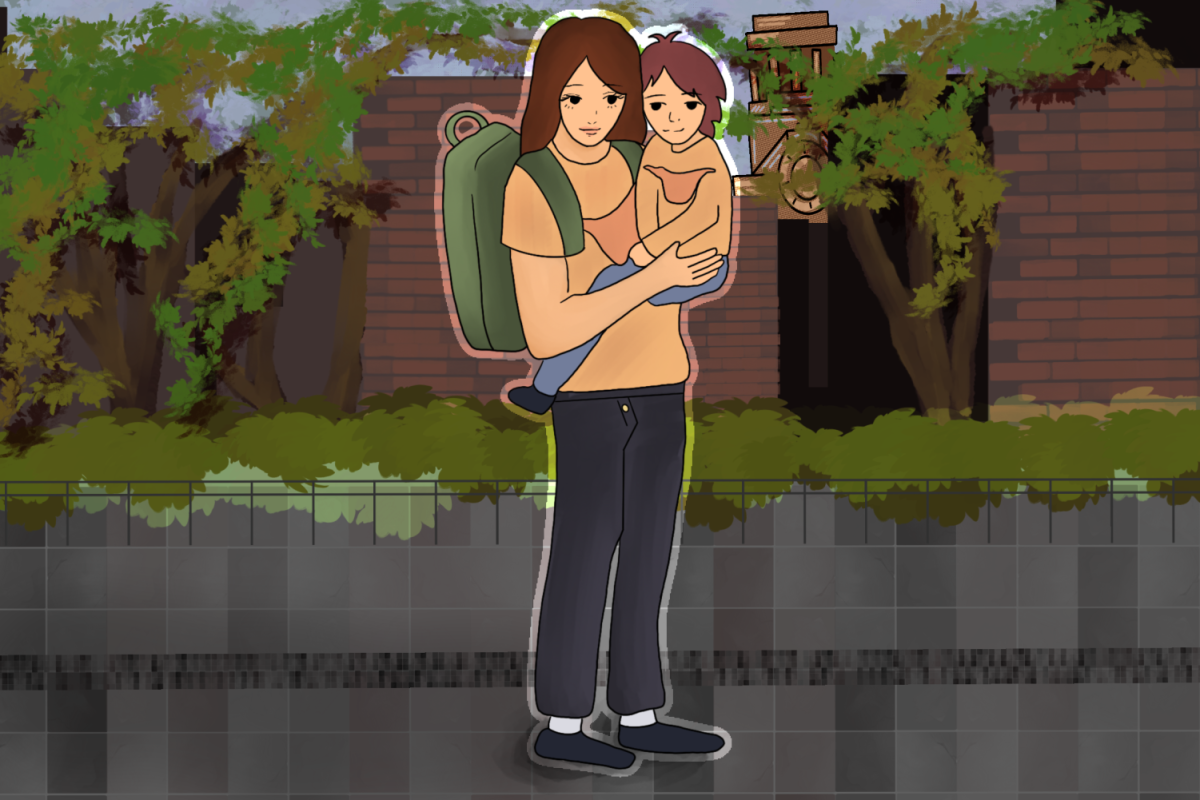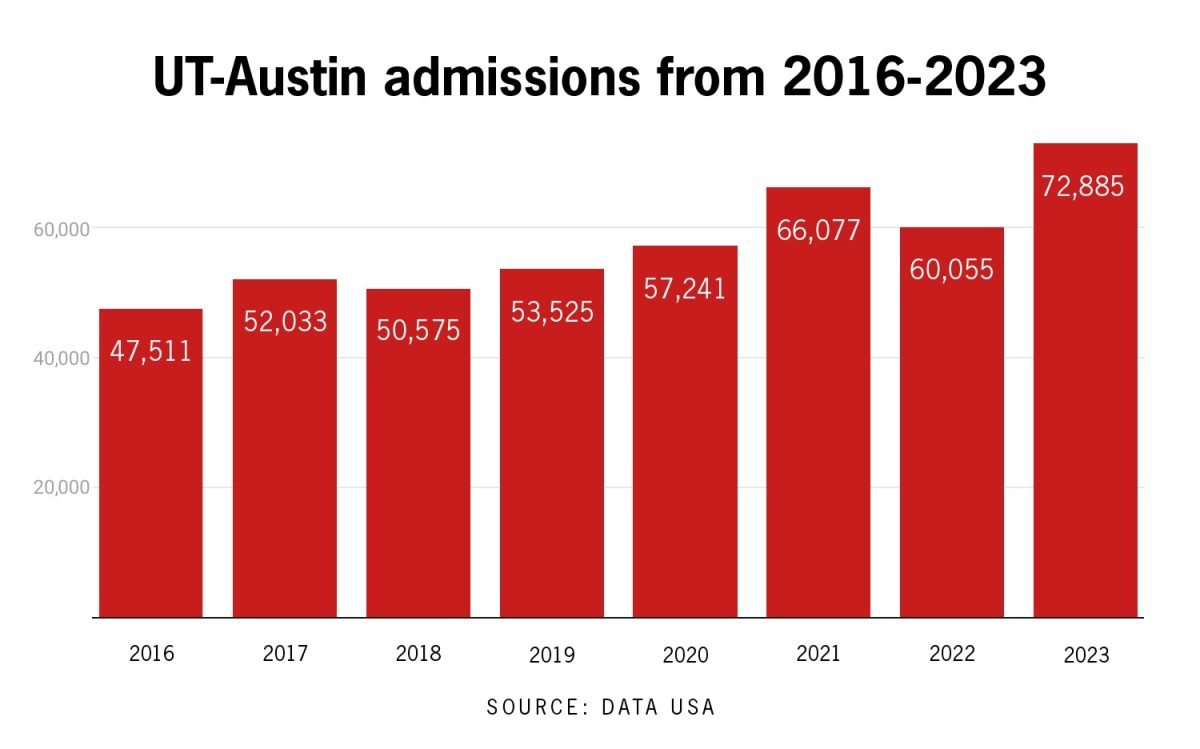Austin Public Health has distributed 134,000 COVID-19 vaccines as of Saturday and is looking toward a “new normal” as Austinites continue to get vaccinated, APH director Stephanie Hayden-Howard said at an in-person media event at the Delco Activity Center on Saturday.
“Even with the addition of variants, that if we maintain the protections, if we maintain the masking, if we maintain the distancing and the hygiene, we will ride this curve down to zero,” said Mark Escott, the interim medical director and health authority for Austin-Travis County. “And we'll do that by May and June. We're not talking about a long term continuance of those protections to the extent that we're doing it now.”
Austin and Travis County were moved to Stage 3 COVID-19 risk guidelines Saturday morning. The UT COVID-19 Modeling Consortium dashboard, which was updated Monday, shows the potential for a continual decrease of cases, Escott said.
“I'm relieved by the fact that we have vaccinated more than 5 million in Texas,” Escott said. “I think it's an incredible achievement of our country, our state and our local governments to be where we are today.”
APH is still prioritizing vaccinations for 1A and 1B populations, but Escott said APH needs to update their IT system in order to determine if someone is a part of the 1C population, people who are 50 to 64 years old. Once the system for vaccinating 1C clientele is in place, APH will vaccinate small portions of 1C populations.
Escott said APH is concerned about a potential surge of cases due to Gov. Greg Abbott’s executive order to remove the mask mandate and allow all businesses to open at 100% capacity.
“We're talking about a surge that starts in April and continues to escalate through May into June, and it's going to continue for a portion of the summer,” Escott said. “We're used to doing the things that we need to do to protect ourselves. Asking our community to do it for another few weeks is a wise investment of time and effort to continue to push this disease combat.”
Hayden-Howard said COVID-19 prevention practices have become a habit for many people, and she hopes this diligence will combat a potential surge due to Abbott’s executive order or spring break travelers returning to Austin at the end of the month.
“We do have folks that are continuing to wear their masks and continuing to social distance. They're looking at the capacity of where they're going, in places that they're in,” Hayden-Howard said. “So my hope is that folks will continue to do those practices and keep us all safe.”
APH has been having discussions about planning for events such as Austin City Limits to ensure COVID-19 safety for future large gatherings, Hayden-Howard said. The number of positive cases, hospitalizations and vaccinations will contribute to large event planning, but a smaller capacity for events will most likely be implemented to ensure safety, Hayden-Howard said.
“I think we always have to make sure that we're doing things that are keeping us all safe,” Hayden-Howard said. “Even if that looks different than what we were doing pre-COVID. That's fine because that may be our new way forward.”
Vaccine allocations are being fairly distributed to counties in Texas, Escott said, but public health officials are urging the federal government to use 2019 census data, as opposed to 2018 data, to determine vaccine allocations.
“One of the challenges that we have is that the federal government is using 2018 census data, as compared to 2019 census data, which leaves us with 1.5 million less people that's counted,” Escott said. “So many people moved to Texas that the population has grown that much … in 2019 to make a difference in what Texas is allocated.”
Hayden-Howard said she is anticipating a public-private partnership for vaccine distribution. The federal government has worked to provide contracts for local vaccine distribution, she said.
“In our conversations with other health care providers across Travis County, they are ready to receive vaccines,” Hayden-Howard said. “They have their systems in place; quite a few of them have a waiting list. It's just a matter of getting the vaccines, and we're able to put it out into our community.”
Hayden-Howard said the pandemic has increased public health awareness. Many public health offices are using incoming financial resources to improve their technology infrastructure to better prepare for a public health crisis in the future, she said.
“Most health departments will receive funding to provide testing, to provide vaccines,” Hayden-Howard said. “Some of us have used some of those funds to set up our electronic platform. Our goal is to keep that platform working and in place to be able to continue to help so when whatever ‘disease of the day’ shows up, we're able to use that platform.”


















